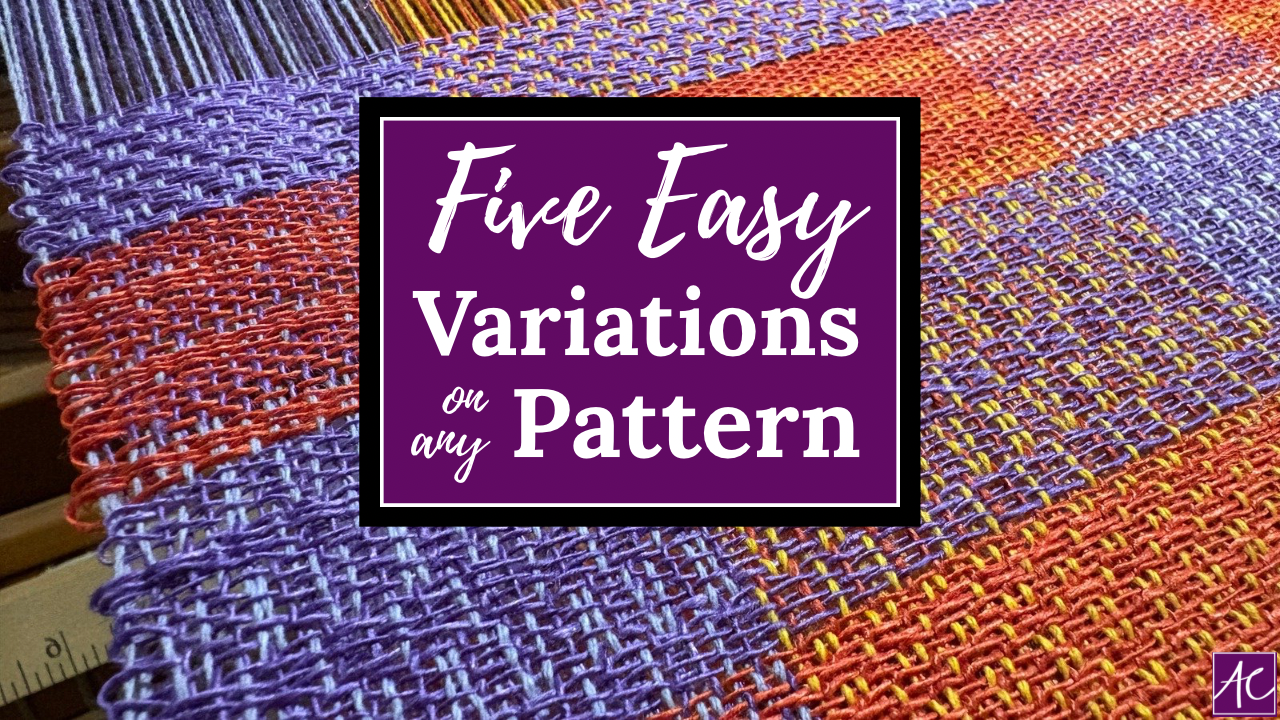This week, I’m kicking off a weaving pattern series. And what better place to begin than plain weave? It’s the simplest weaving pattern there is. The original, the work horse, the practical one.
In this series, I’ve chosen 6 of my favorites to highlight. There are many, MANY more weaving patterns than that. But, these will do the trick for now. Please enjoy Episode 14 of A Handwoven Experience, all about plain weave!
Show Notes –
Weaving Patterns – Weaving patterns refer to a plan for creating fabric on a loom. They are broken up into various categories based on the characteristics of the process and the fabric. In this series, I’ll be touching on plain weave, twill, rep weave, overshot, double weave, and tapestry.
Plain Weave – Plain weave is the method you used to make a potholder. Over, under, over, under, etc.
Warp Yarns – Warp yarns are the yarns in the loom, under tension.
Weft Yarns – Weft yarns are the yarns in the shuttle.
Complete Side Bar –
Potholder loom – As a child of the 70’s, my potholder loom was a red plastic square frame. You took cotton loops and strung them one direction. Then, you wove the loops over, under in the opposite direction.
The goal was to create a potholder to use in the kitchen, protecting your hands from hot pots and pans. What I’ve found is that our 70’s potholders simply won’t die, they just get uglier. Hopefully, yours are holding up better than mine (or you finally tossed them).
I looked up a bit about the history of potholder looms and found some fascinating details! Apparently, the potholder cotton loops were waste products from sock manufacturing. The looms were first produced in the 1930’s in an effort to recycle and re-purpose. They were made from metal, wood, or plastic, and came with a long hook to help weave the loops through.
They became very popular in the 1950’s and were still going strong when I was a kid. In an ironic twist, they began making the loops out of a synthetic material (which will melt when it comes in contact with a hot pot). So, if you decide you want to take a trip down memory lane to make a potholder, be sure to order cotton loops.
Freebie for You!
Great news – I have created a free .pdf that follows along with this weaving pattern series! It provides an overview of each weaving pattern. Tells you how to recognize it and what it is used for. Plus, I’ve included a few notes on how to create the pattern on your loom. It’s a fabulous resource! Click here to get your copy today. Happy Weaving!



